
The Life and Death of 9413: a Hollywood Extra is a 1928 American silent experimental short film co-written and co-directed by Robert Florey and Slavko Vorkapić. Considered a landmark of American avant-garde cinema, it tells the story of a man who comes to Hollywood with dreams of becoming a star; he fails and becomes dehumanized, with studio executives reducing him to the role of an extra and writing the number "9413" on his forehead.
Magic realism, magical realism or marvelous realism is a style or genre of fiction and art that presents a realistic view of the world while incorporating magical elements, often blurring the lines between fantasy and reality. Magical realism is the most commonly used of the three terms and refers to literature in particular. Magic realism often refers to literature in particular, with magical or supernatural phenomena presented in an otherwise real-world or mundane setting, commonly found in novels and dramatic performances. In his article “Magical Realism in Spanish American Literature”, Luis Leal explains the difference between magic literature and magical realism, stating that, “Magical realism is not magic literature either. Its aim, unlike that of magic, is to express emotions, not to evoke them.” Despite including certain magic elements, it is generally considered to be a different genre from fantasy because magical realism uses a substantial amount of realistic detail and employs magical elements to make a point about reality, while fantasy stories are often separated from reality. Magical realism is often seen as an amalgamation of real and magical elements that produces a more inclusive writing form than either literary realism or fantasy.
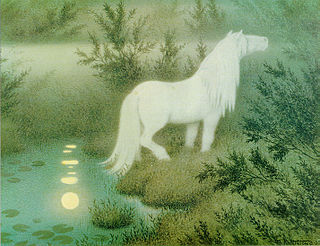
A fantasy world or fictional world is a world created for fictional media, such as literature, film or games. Typical fantasy worlds feature magical abilities. Some worlds may be a parallel world connected to Earth via magical portals or items ; an imaginary universe hidden within ours ; a fictional Earth set in the remote past or future ; an alternative version of our History ; or an entirely independent world set in another part of the universe.
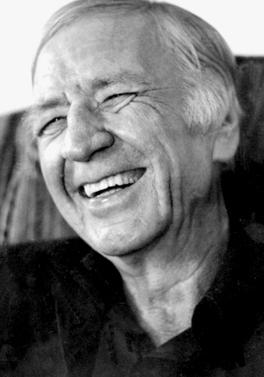
James Myers Thompson was an American prose writer and screenwriter, known for his hardboiled crime fiction.
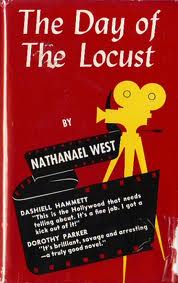
The Day of the Locust is a 1939 novel by American author Nathanael West set in Hollywood, California. The novel follows a young artist from the Yale School of Fine Arts named Tod Hackett, who has been hired by a Hollywood studio to do scene design and painting. While he works he plans an important painting to be called "The Burning of Los Angeles", a portrayal of the chaotic and fiery holocaust which will destroy the city. While the cast of characters Tod befriends are a conglomerate of Hollywood stereotypes, his greater discovery is a part of society whose "eyes filled with hatred", and "had come to California to die". This undercurrent of society captures the despair of Americans who worked and saved their entire lives only to realize, too late, that the American dream was more elusive than they imagine. Their anger boils into rage, and the craze over the latest Hollywood premiere erupts violently into mob rule and absolute chaos.

Harold Montgomory Budd was an American music composer and poet. Born in Los Angeles and raised in the Mojave Desert, he became a respected composer in the minimal music and avant-garde scene of Southern California in the late 1960s, and later became better known for his work with figures such as Brian Eno and Robin Guthrie. Budd developed what he called a "soft pedal" technique for playing piano, with use of slow playing and prominent sustain.
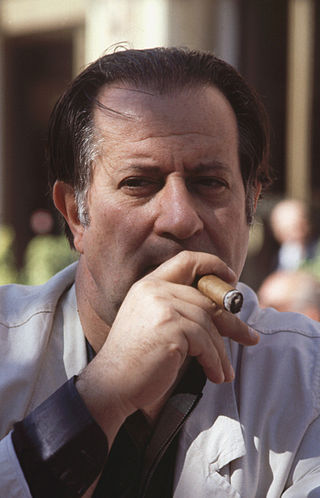
Giovanni "Tinto" Brass is an Italian film director and screenwriter. In the 1960s and 1970s, he directed many critically acclaimed avant-garde films of various genres. Today, he is mainly known for his later work in the erotic genre, with films such as Caligula, Così fan tutte, Paprika, Monella and Trasgredire.
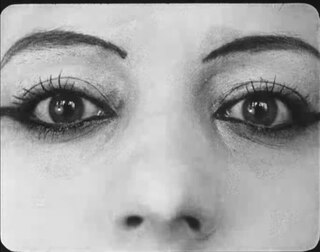
Experimental film or avant-garde cinema is a mode of filmmaking that rigorously re-evaluates cinematic conventions and explores non-narrative forms or alternatives to traditional narratives or methods of working. Many experimental films, particularly early ones, relate to arts in other disciplines: painting, dance, literature and poetry, or arise from research and development of new technical resources.
Stephen Michael Erickson is an American novelist. The author of influential works such as Days Between Stations, Tours of the Black Clock and Zeroville, he is the recipient of the American Academy of Arts and Letters award, the Lannan Lifetime Achievement Award and a Guggenheim fellowship.
Structural film was an avant-garde experimental film movement prominent in the United States in the 1960s. A related movement developed in the United Kingdom in the 1970s.

Alberto Savinio, born as Andrea Francesco Alberto de Chirico was a Greek-Italian writer, painter, musician, journalist, essayist, playwright, set designer and composer. He was the younger brother of 'metaphysical' painter Giorgio de Chirico. His work often dealt with philosophical and psychological themes, and he was also heavily concerned with the philosophy of art.
Todd Bash is an avant-garde playwright from Los Angeles, California.

Justine, published in 1957, is the first volume in Lawrence Durrell's literary tetralogy, The Alexandria Quartet. The tetralogy consists of four interlocking novels, each of which recounts various aspects of a complex story of passion and deception from differing points of view. The quartet is set in the Egyptian city of Alexandria in the 1930s and 1940s. The city itself is described by Durrell as becoming as much of a complex character as the human protagonists of the novels. Since first becoming available to the public and reviewers in 1957, Justine has inspired what has been called "an almost religious devotion among readers and critics alike." It was adapted into the film of the same name in 1969.

Maelström is a 2000 Canadian absurdist psychological drama film written and directed by Denis Villeneuve. It stars Marie-Josée Croze as a depressed young businesswoman who becomes romantically involved with the son of a man she killed in a hit-and-run accident. Employing fantasy and comedic elements, Maelström is narrated by a talking fish.
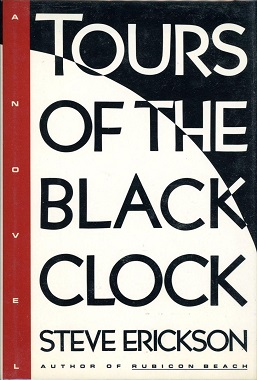
Tours of the Black Clock is the third novel by Steve Erickson, published in 1989. It has been translated into French, Spanish, Dutch and Japanese among other languages. The narrative concerns itself with two of the most influential figures of the 20th century, as Adolf Hitler appears as an important character, and allusions are made to Albert Einstein and the theory of relativity. The novel was cited as one of the year's best by the Village Voice and the New York Times Book Review and is included on Larry McCaffery's list of the 20th Century’s Greatest Hits: 100 English-Language Books of Fiction.
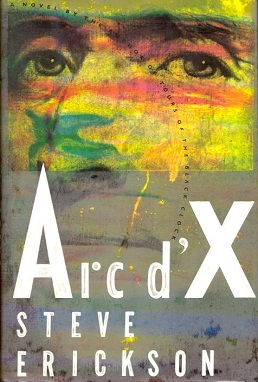
Arc d'X (1993), by Steve Erickson, is an avant-pop novel. Upon publication in 1993 it received wide attention particularly from other novelists such as Thomas Pynchon, Tom Robbins and William Gibson, and has been translated into Italian, Japanese and other languages.

The following outline is provided as an overview of and topical guide to fantasy:
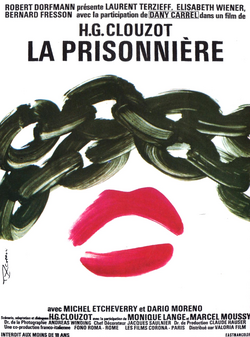
La Prisonnière is a 1968 drama film written and directed by Henri-Georges Clouzot. It follows an attractive young woman living with an avant-garde artist who falls disastrously for the voyeuristic owner of the gallery that shows her husband's work. Clouzot's only film completed in colour, it was the last of his career.
Lullaby is a 1929 American silent drama film directed by Boris Deutsch and starring Michael Visaroff, and Riva Segal. In Lullaby there is not only a deeply realistic plot that is investigated by the director with a skilled use of light and close-up but also a sort of dream plot that lives in the interiority of the female protagonist represented through faces of demons tormenting her sleep and cubist alteration of the cityscape realized using Deutsch's paintings. In the development of the film the two planes, the real one and the dream one, merge each other and the reality for the female protagonist is one that embraces both sphere of matter and spirit. A work that ahead of its times. Only in 40s, after 14 years, Maya Deren and Alexander Hammid will make similar films. Boris Deutsch declared that "is desire was to get at the abstract reality, the realm of mental imagery and imagination, without losing of the world of reality"

Kesrick: An Adult Fantasy is a fantasy novel by American writer Lin Carter, the first in his series about the fictional "Flat Earth" of Terra Magica. It was first published in paperback by DAW Books in November 1982. A trade paperback edition was published by Wildside Press in February 2001, with an ebook edition following from Gateway/Orion in March 2020. It has also been translated into Italian.















